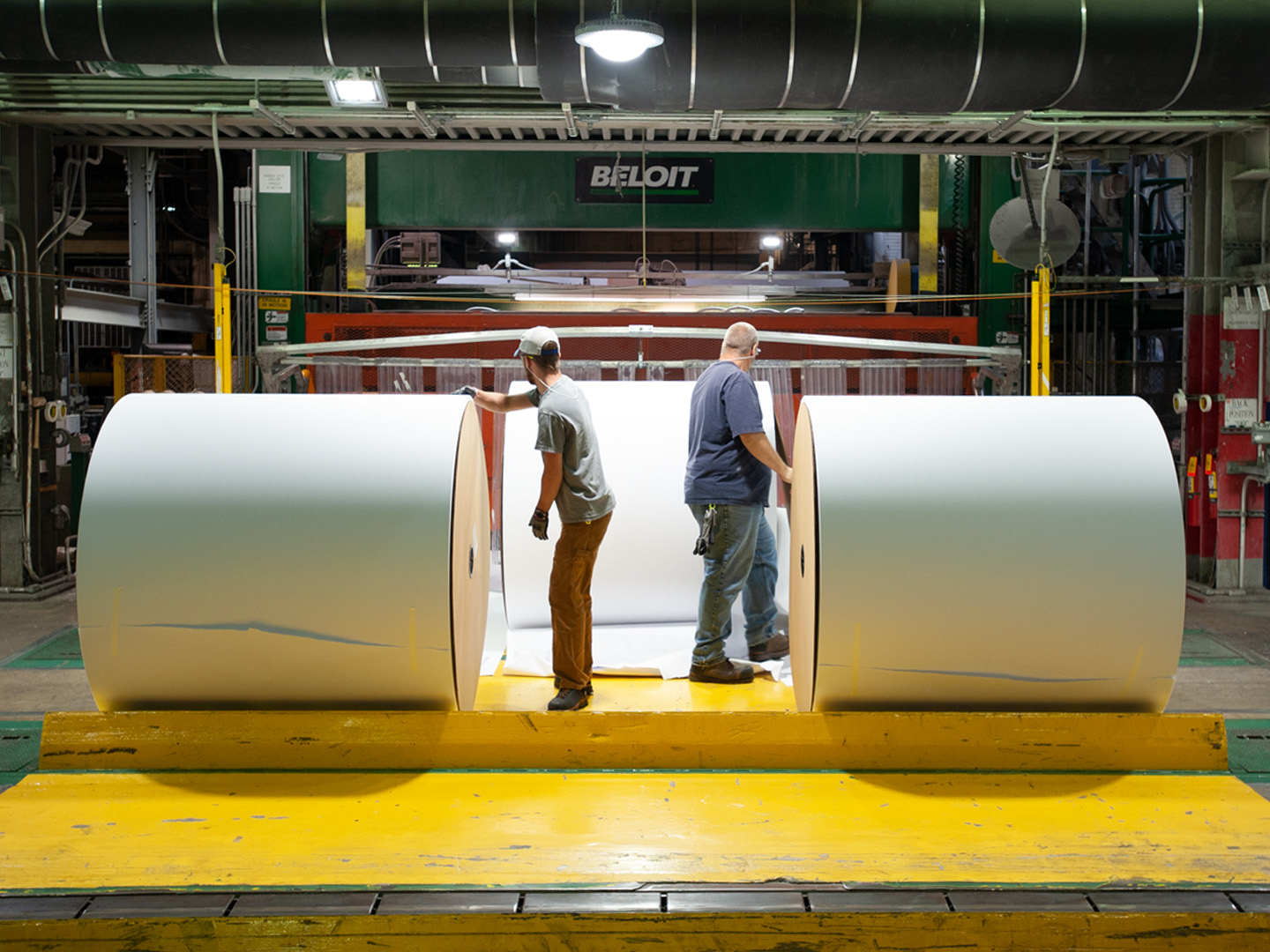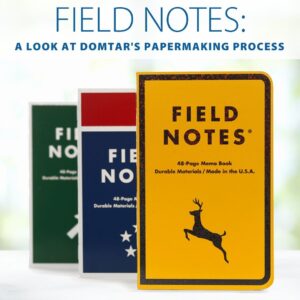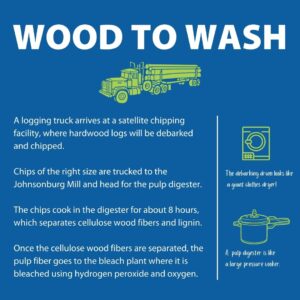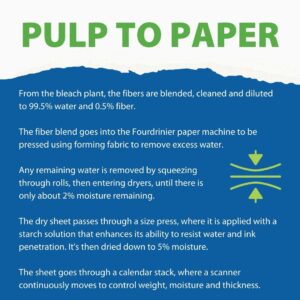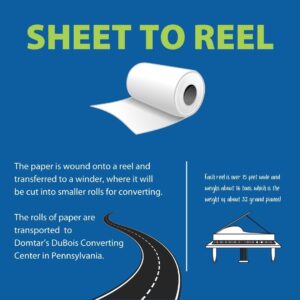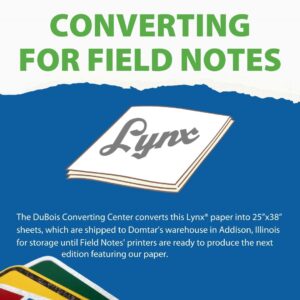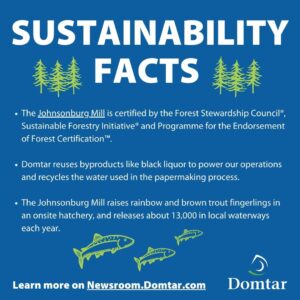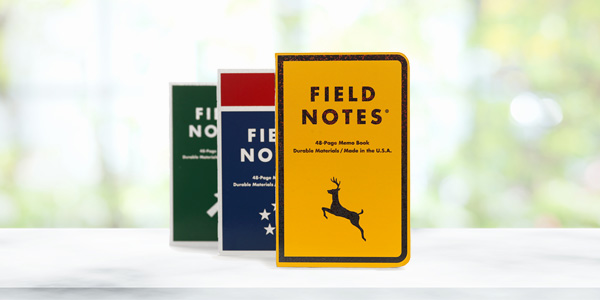 This is the second in a two-part series about Domtar’s relationship with Field Notes. It focuses on the production process at our Johnsonburg Mill, where Lynx® paper is made and used to produce Field Notes body paper. Cougar® paper from our Rothschild Mill is also used for Field Notes covers.
This is the second in a two-part series about Domtar’s relationship with Field Notes. It focuses on the production process at our Johnsonburg Mill, where Lynx® paper is made and used to produce Field Notes body paper. Cougar® paper from our Rothschild Mill is also used for Field Notes covers.
A truck lumbers down Route 219 towards the Johnsonburg Mill, loaded with 25 tons of mixed hardwood chips perfect for making the Domtar Lynx® paper used in Field Notes® memo books. Let’s take a trip from the chipping facility to the paper mill to see the production process that turns chips into a sheet of high-quality paper on your desk.
From Wood to Wash
Hardwood logs arrive at one of the Johnsonburg Mill’s satellite chipping facilities in 20- to 25-foot lengths. First, they’re loaded into a debarking drum — a large-diameter drum that looks like a giant clothes dryer.
“As the drum turns, the logs tumble against each other, and the resulting abrasion removes the tree bark to reveal smooth, clean logs necessary to produce high-quality pulp and paper,” says Mill Manager Ken Baron.
The debarked logs are then loaded into the chipper and sorted and screened by size. The chips that are deemed too small are sent to a local mulch facility or to local dairy farmers. The chips that are sized just right are trucked to the mill and sent to the pulp digester. (The mill’s woodyard typically operates with six to nine days’ worth of chip inventory. For the purposes of this story, we’re following the production process in a continuous way.)
“The pulp digester is like a large pressure cooker,” Baron says. The chips cook for about eight hours using heat and a unique chemistry blend that separates the wood into its two main parts: cellulose wood fibers and lignin (the natural glue that holds wood fibers together), which dissolves and becomes black liquor.
After going through the digester, the cellulose wood fibers are separated from the black liquor in the brown stock washing process. The pulp fiber moves on to be bleached using hydrogen peroxide and oxygen.
From Pulp to Paper
From the bleach plant, the fibers are blended, cleaned and diluted to 99.5 percent water, 0.5 percent fiber. This fiber blend enters into the Fourdrinier paper machine where forming fabric, which resembles a large mesh screen, helps remove excess water to form a sheet. The water that’s removed is recycled.
“Paper leaving the Fourdrinier is still about 80 percent water, so it’s really fragile,” Baron says.
The next few steps in the production process remove that remaining water.
The fragile sheet enters the press section, where it is squeezed through rolls on continuous blankets called wet felts to remove more water. The sheet will be about 60 percent water before it enters the dryers, which are a series of steam-heated cans that cause the remaining moisture to evaporate.
The paper leaving the dryers now contains only about 2 percent moisture. The dry sheet then passes through a size press, which applies a starch solution to both sides to enhance its ability to resist water and ink penetration. After the starch is applied, additional drying is needed to bring the paper moisture back down to about 5 percent.
After drying, the sheet moves through a calendar stack, where a scanner continuously moves across the sheet to control weight, moisture and thickness.
“After all the final paper properties are set, the paper is wound onto a 184-inch-wide reel that weighs about 16 tons,” Baron says. “Then it’s transferred to a winder to be cut into smaller rolls that are sent to the DuBois, Pennsylvania, converting facility.”
At DuBois, those rolls are converted to 25-inch by 38-inch sheets and stacked on shipping skids.
Because Field Notes cares deeply about sustainability, the company uses papers made in the United States (generally within the Great Lakes region) and prints as near as possible to its Chicago headquarters. That’s why the paper converted at DuBois is shipped to the Domtar warehouse in Addison, Illinois, where it stays until it’s time for production.
“Field Notes are very well-known and popular paper products,” Baron says. “Along with our colleagues at the Rothschild Mill, we’re proud to play a part in their product.”
Get more details about Field Notes in the latest edition of Domtar’s Paper Matters magazine, available online now.
“Field Notes are very well-known and popular paper products. Along with our colleagues at the Rothschild Mill, we’re proud to play a part in their product.”— Ken Baron, Johnsonburg Mill Manager, Domtar
